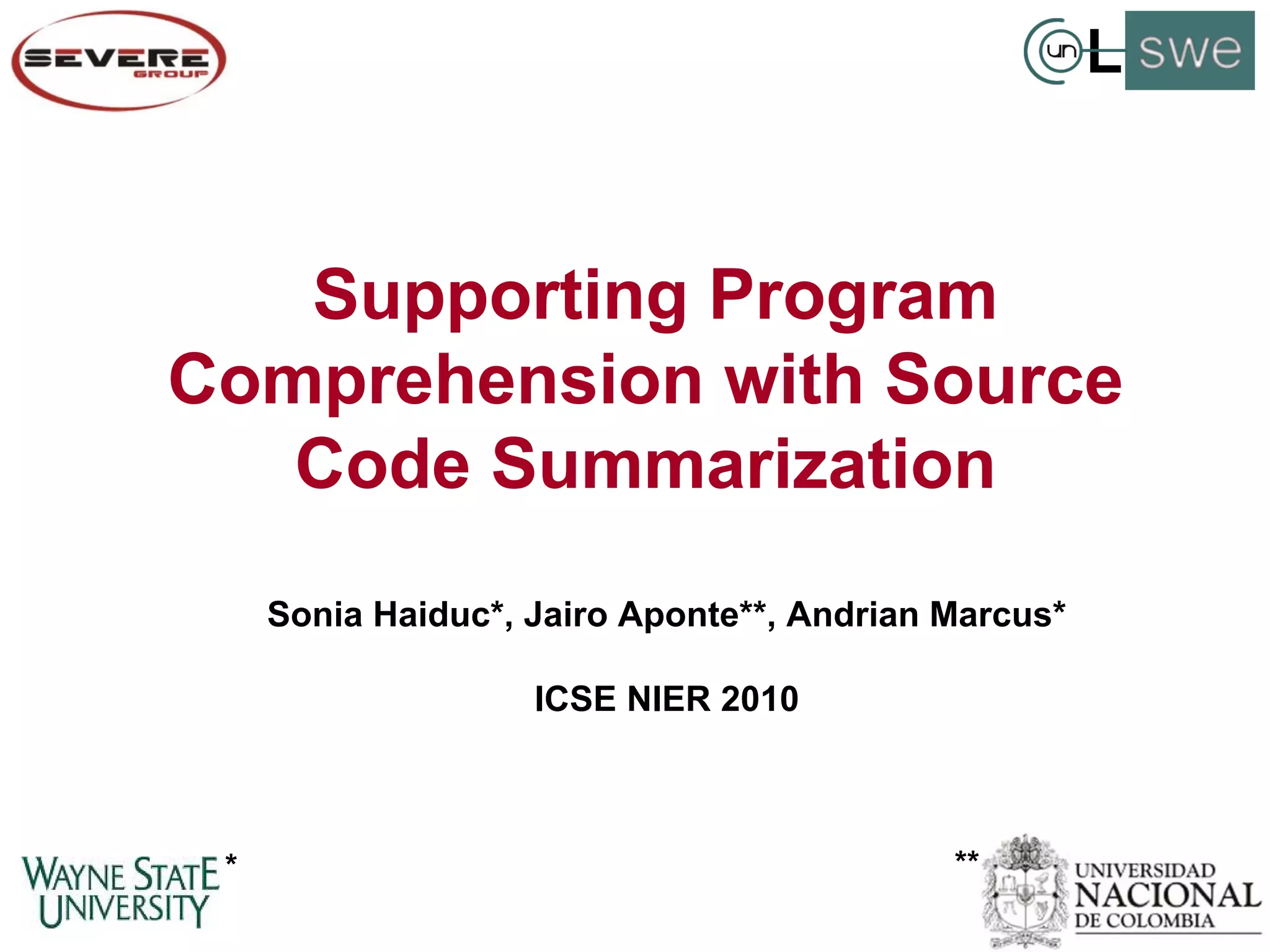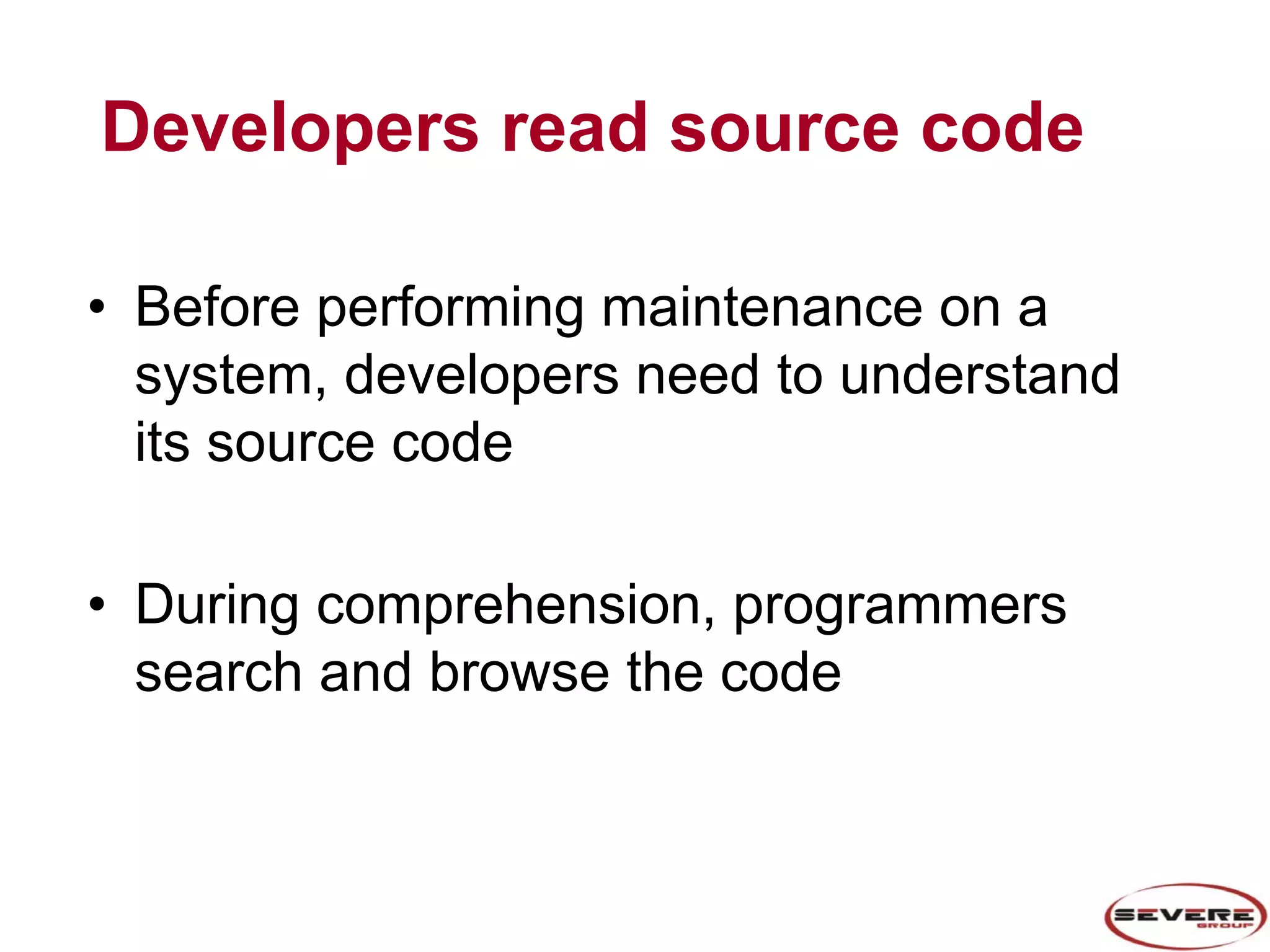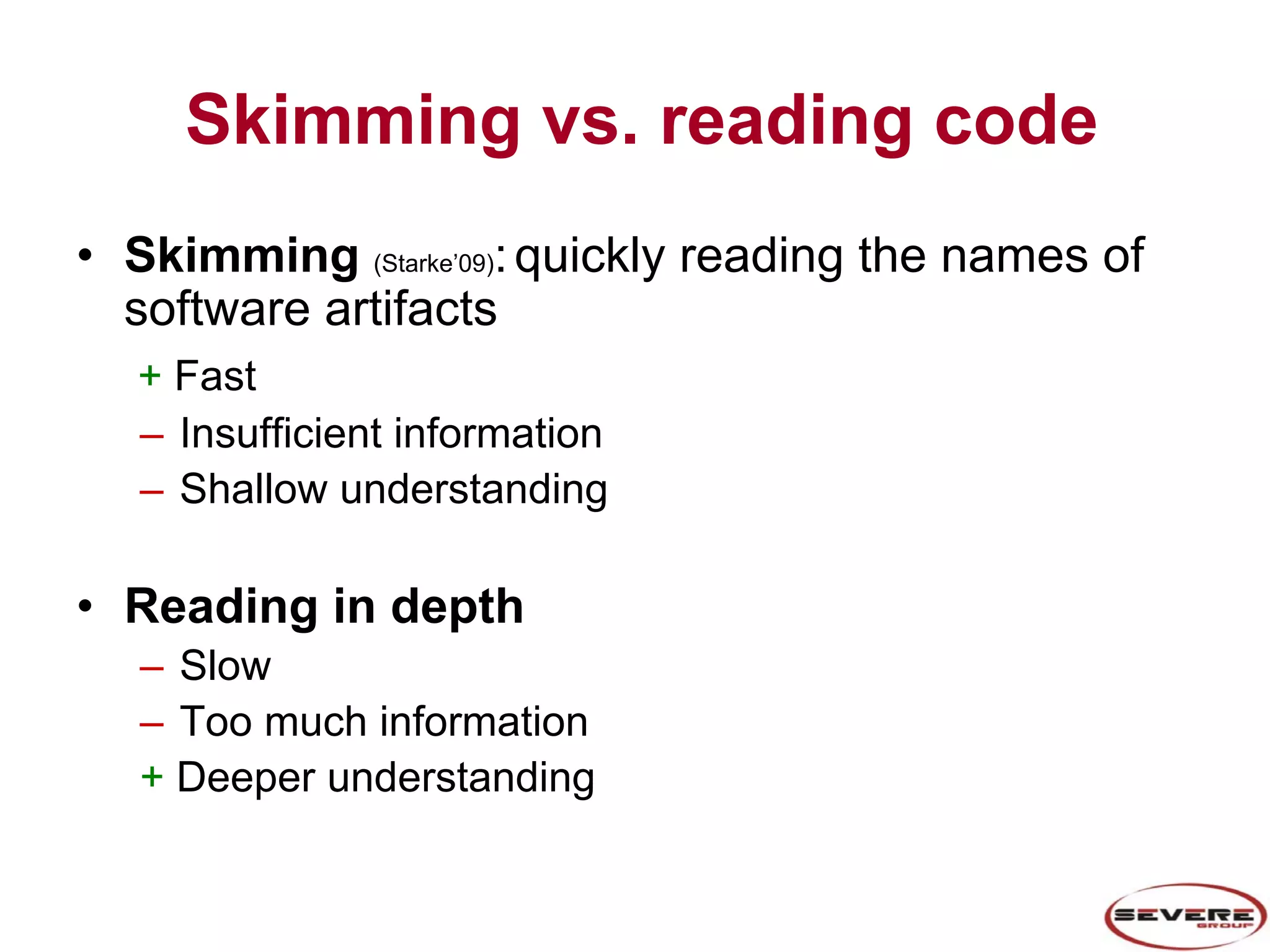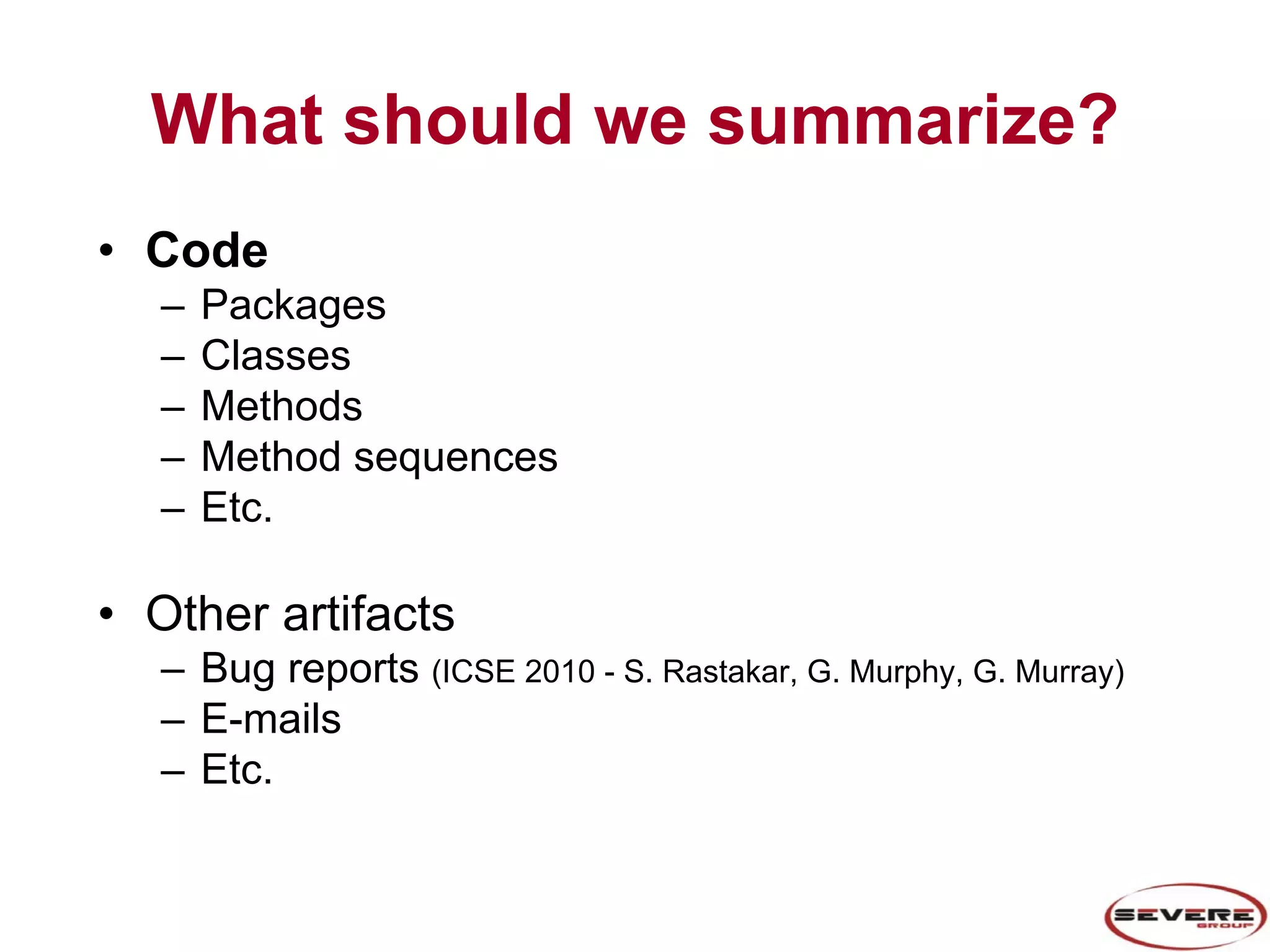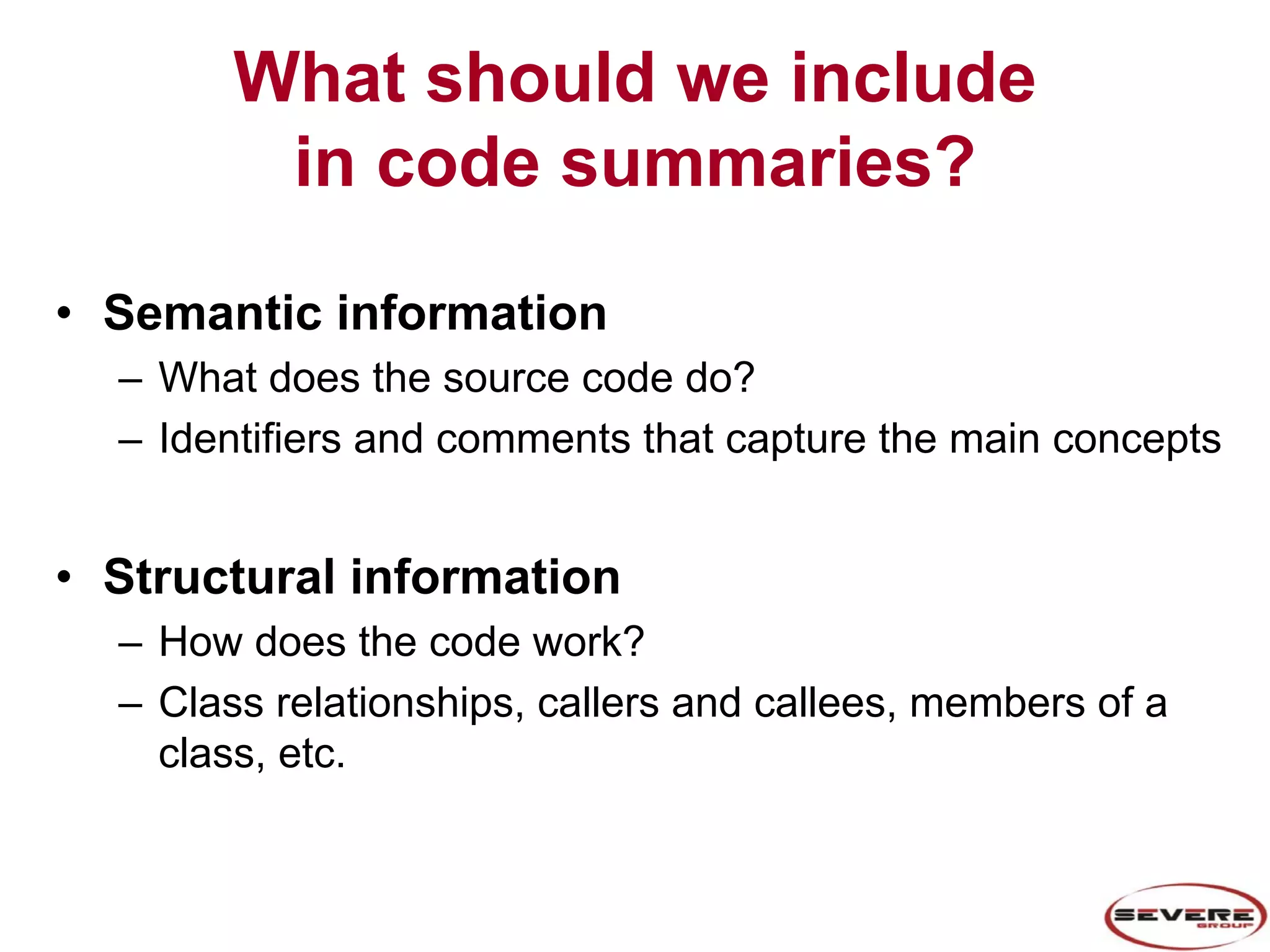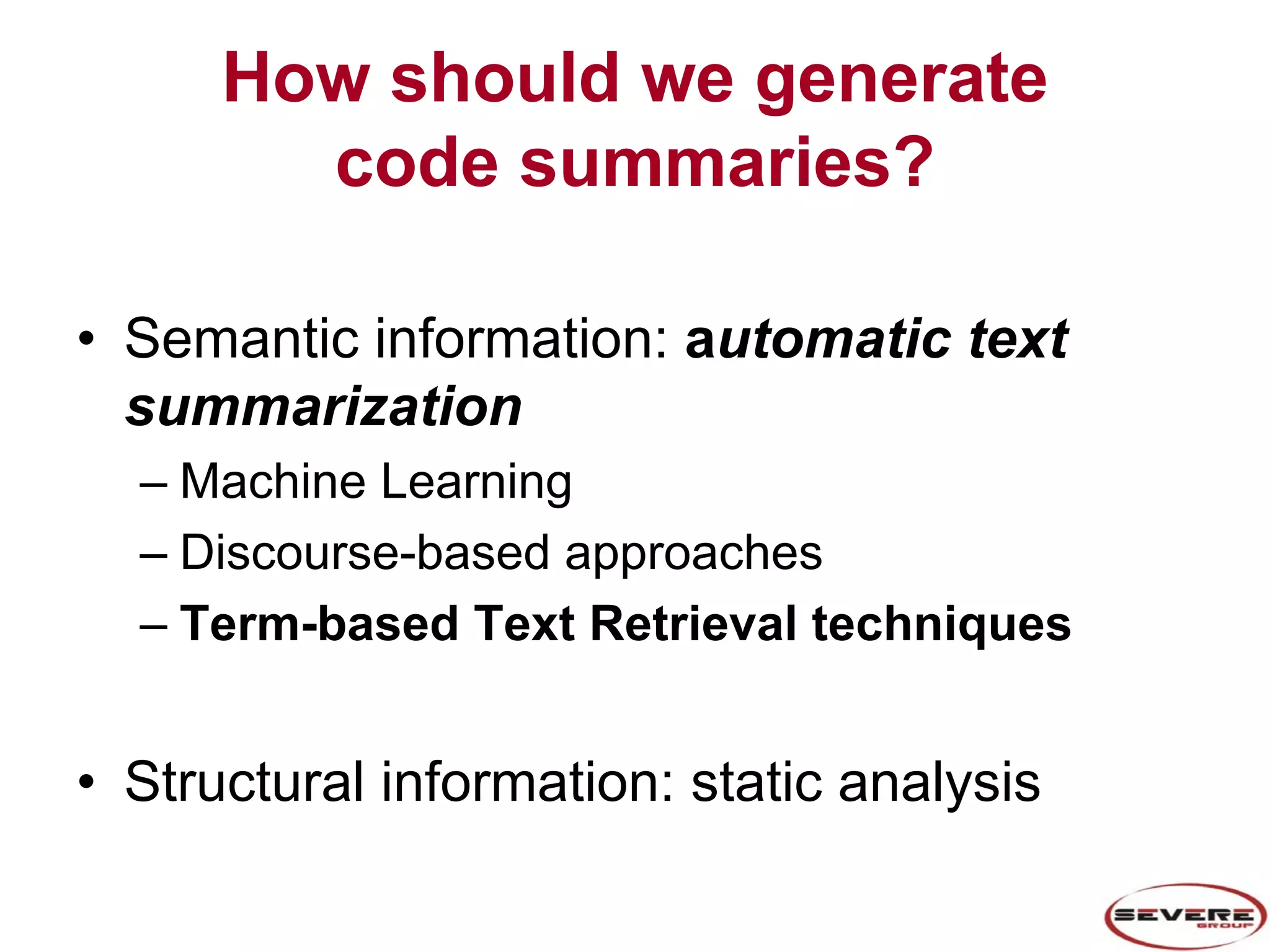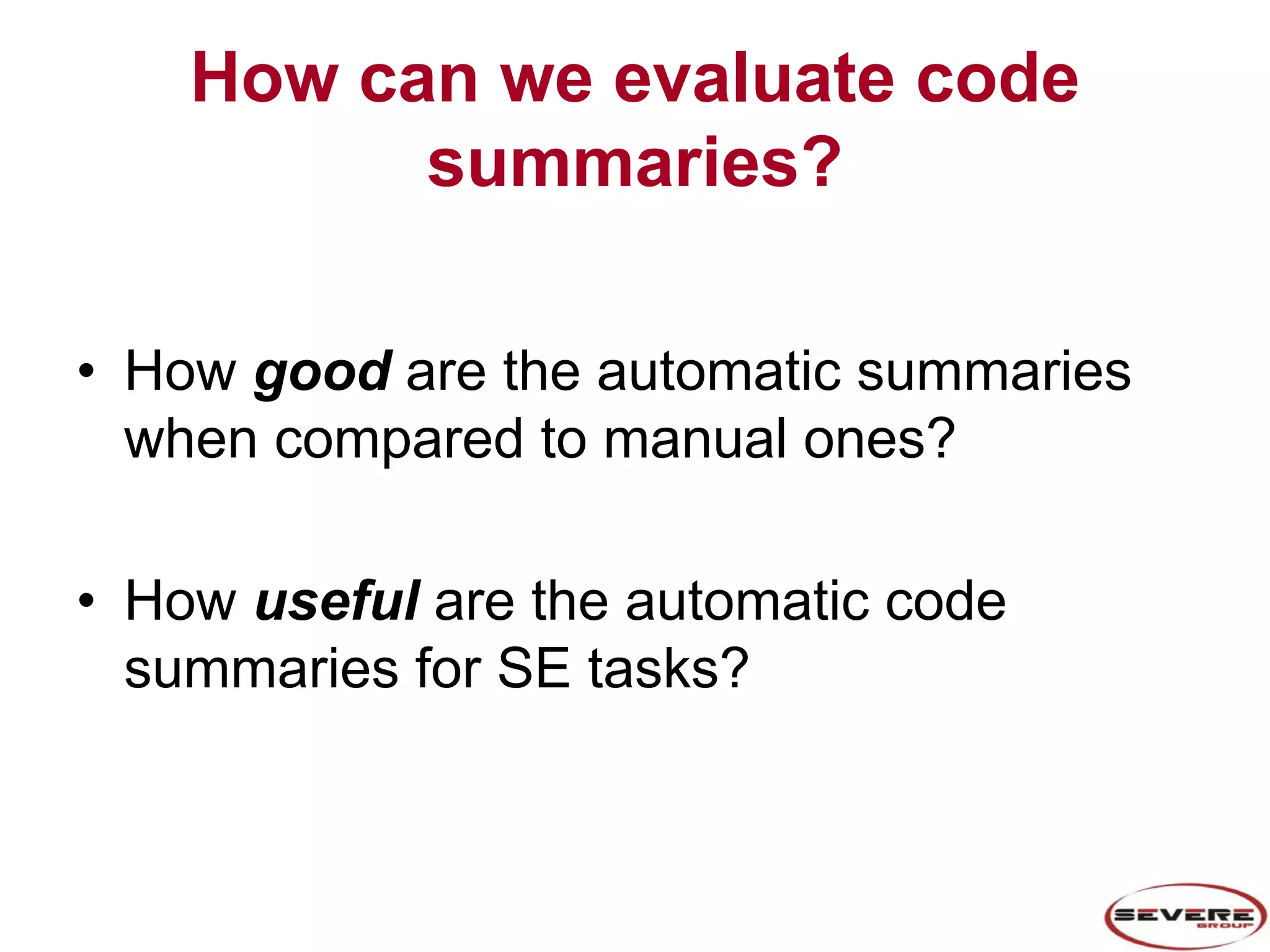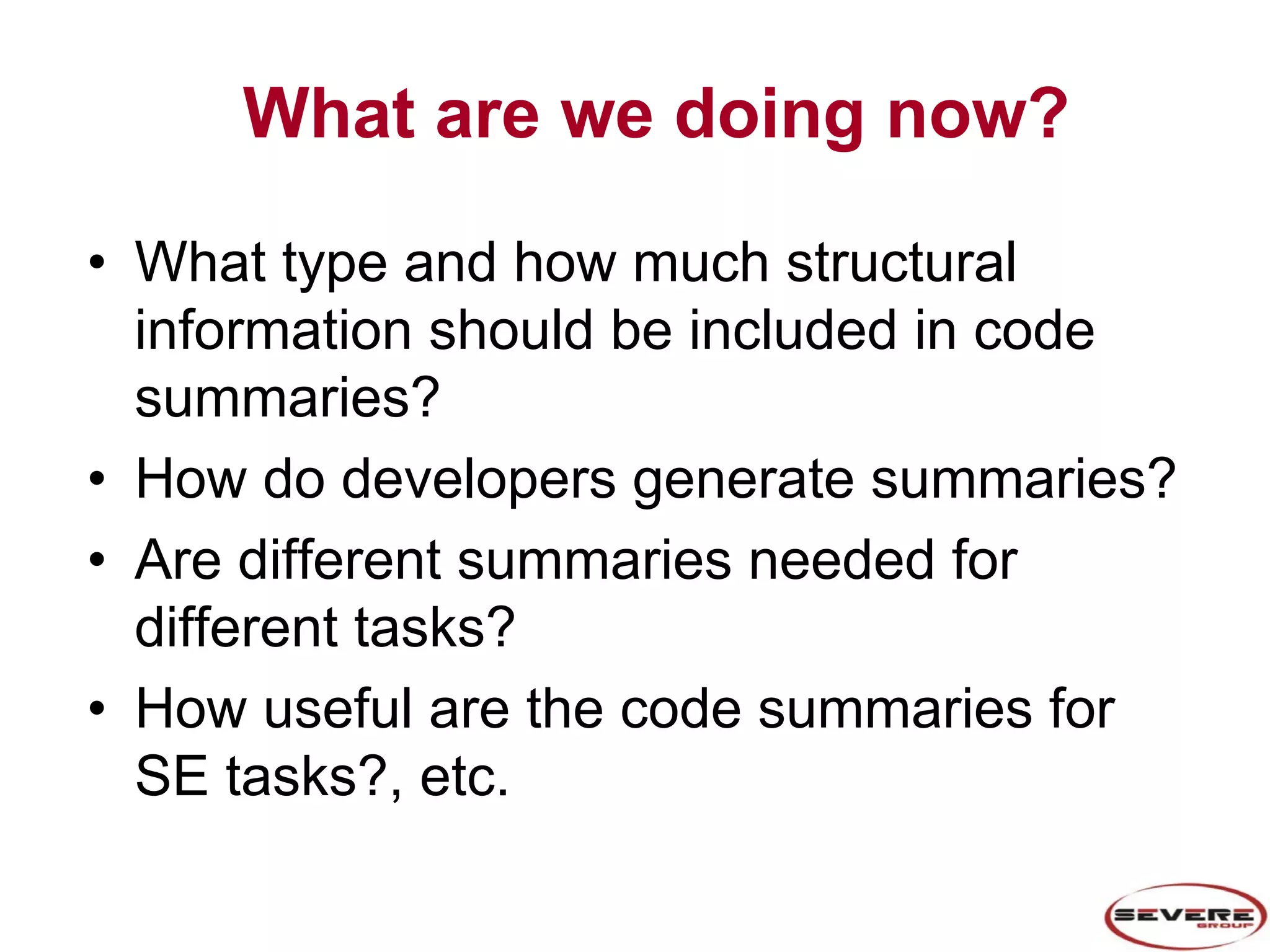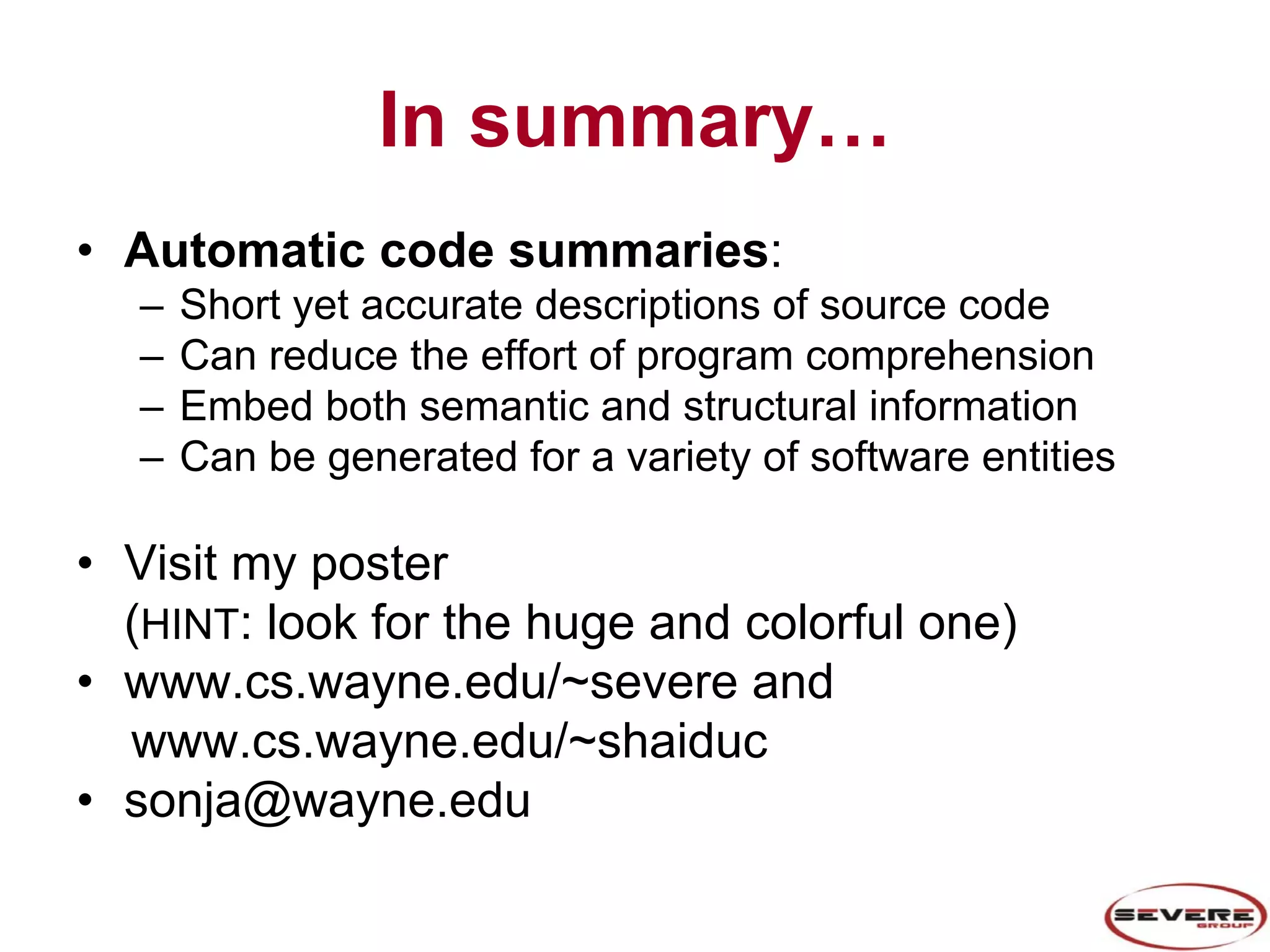The document discusses the importance of source code summarization in aiding program comprehension for developers, highlighting the difference between skimming and in-depth reading of code. It outlines methods for generating automatic code summaries that include both semantic and structural information, and provides insights from a preliminary evaluation comparing automatic summaries to those created by developers. The study suggests that these automatic summaries can reduce the effort required for understanding code while offering accurate and concise descriptions of various software entities.
